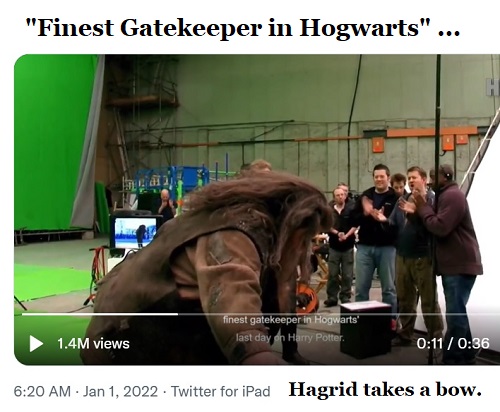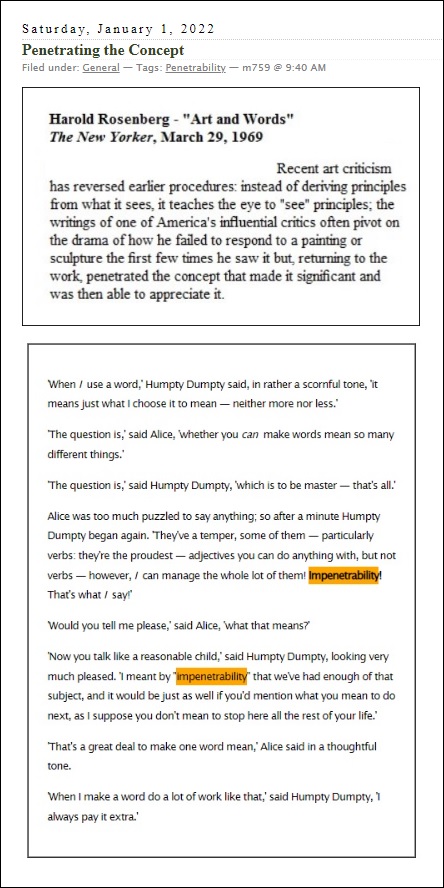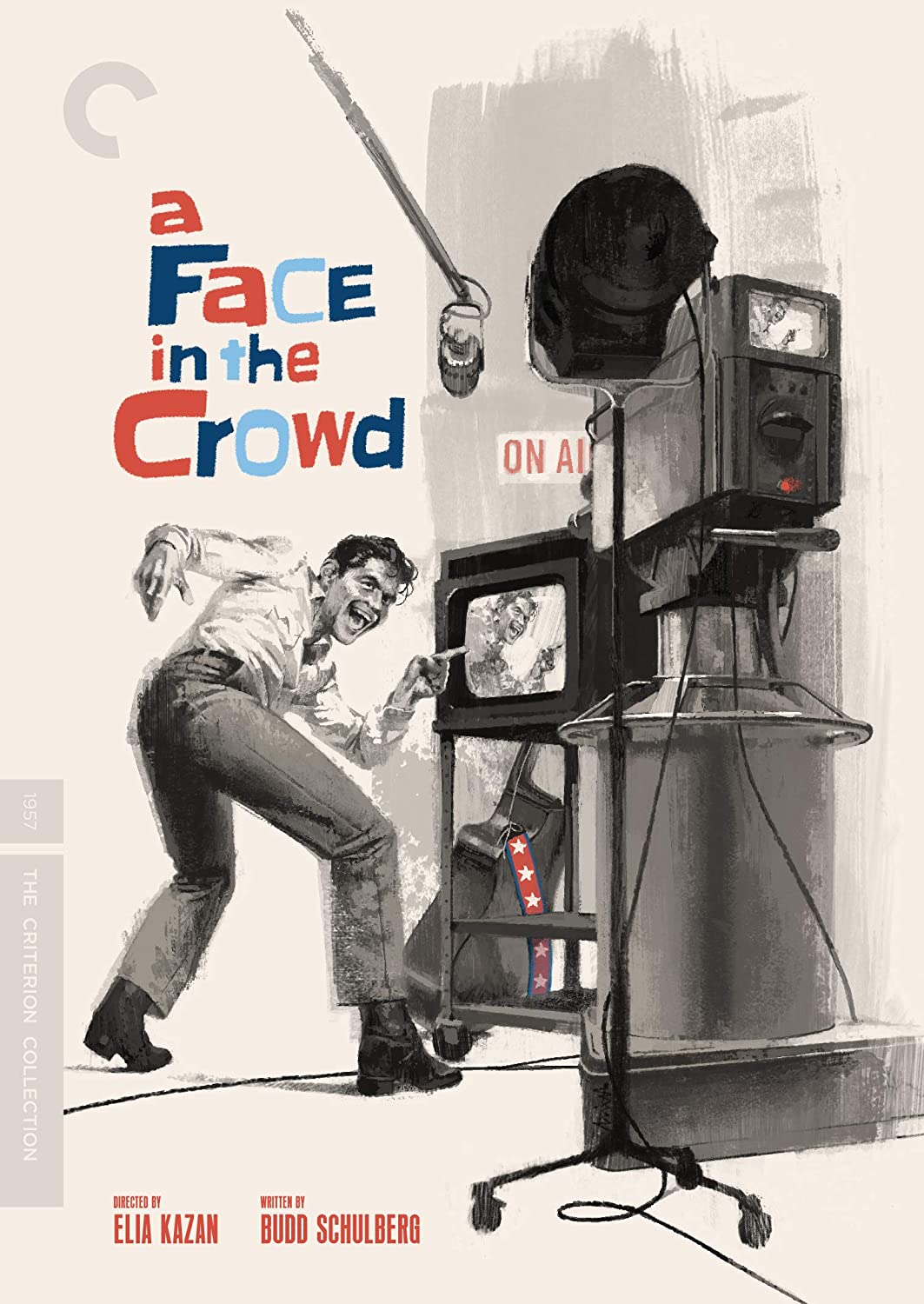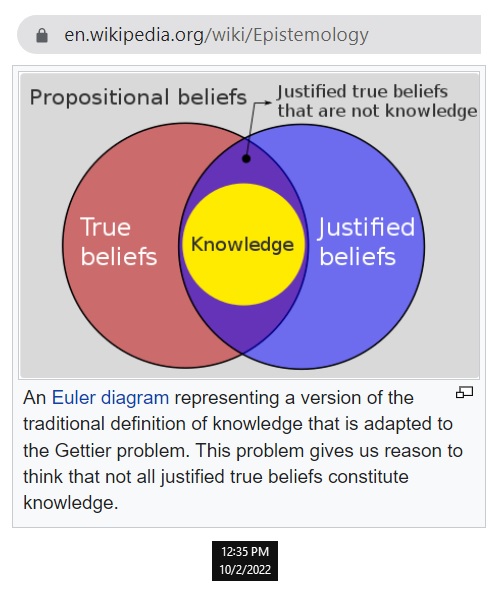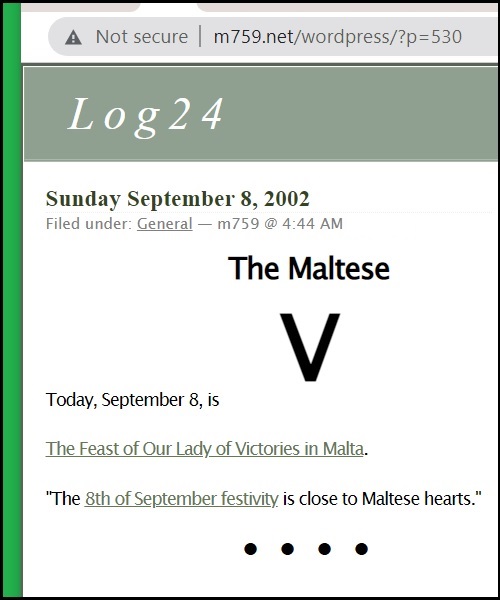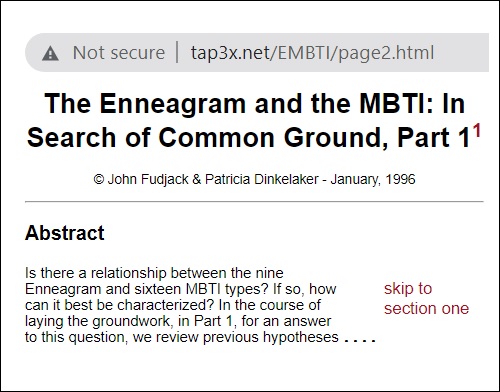Wednesday, November 9, 2022
"Apart from its great antiquity the picture-story mode of presentation
favored by the unconscious has the appeal of its simple utility.
A picture can be recalled in its entirety whereas an essay cannot."
— Cormac McCarthy, essay on language and the unconscious,
April 17, 2017



Comments Off on A Picture Story for Cormac

Bontecou on an album cover —

A song from the above album in "11/22/63" —

The song in the film —

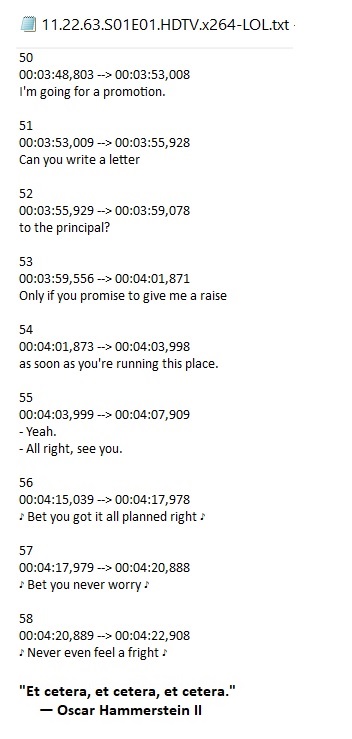
Comments Off on Is the Devil in the Details?
Tuesday, November 8, 2022

See as well Many Dimensions in this journal.
Comments Off on Dimensions
From The Queen's Gambit by Walter Tevis —

|
The Saturday afternoon movie in the library was The Robe . It had Victor Mature in it and was spiritual; all the staff was there, sitting attentive in a special row of chairs at the back, near the shuddering projector. Beth kept her eyes nearly shut during the first half-hour; they were red and sore. She had not slept at all on Thursday night and had dozed off for only an hour or so Friday. Her stomach was knotted, and there was the vinegar taste in her throat. She slouched in her folding chair with her hand in her skirt pocket, feeling the screwdriver she had put there in the morning. Walking into the boys’ woodworking shop after breakfast, she took it from a bench. No one saw her do it. Now she squeezed it in her hand until her fingers hurt, took a deep breath, stood up and edged her way to the door. Mr. Fergussen was sitting there, proctoring.
“Bathroom,” Beth whispered.
Mr. Fergussen nodded, his eyes on Victor Mature, bare-chested in the arena.
She walked purposively down the narrow hallway, over the wavy places in the faded linoleum, past the girls’ room and down to the Multi-Purpose Room, with its Christian Endeavour magazines and Reader’s Digest Condensed Books and, against the far wall, the padlocked window that said PHARMACY.
|
A related Log24 post —


"Discuss." — Coffee Talk
Comments Off on Story Dice


Also on January 14, 2021 —


Comments Off on Ay Que Bonito Es Volar
Monday, November 7, 2022
Or: MDT-48 Meets COMP360.
‘It doesn’t have a street-name and that’s because, as yet,
it doesn’t have any street profile – which is incidentally
the way we want it to stay. The boys in the kitchen are
keeping it low-key and anonymous. They’re calling it MDT-48.’
The boys in the kitchen?
— Glynn, Alan. Limitless: A Novel (p. 40).
Picador. Kindle Edition.
(Originally published by Little, Brown
in Great Britain in 2001 as The Dark Fields .)
From Log24 on Nov. 29, 2020 —

CNN story from All Souls' Day 2022 —
“This drug can be extracted from magic mushrooms,
but that is not the way our compound is generated.
It’s synthesized in a purely chemical process
to produce a crystalline form,” said Goodwin, who is
the chief medical officer of COMPASS Pathways,
the company that manufactures COMP360 and
conducted the study."
See as well "To Think That It Happened on Prescott Street"
and related posts.
Comments Off on Prescott Street Revisited: The Boys in the Kitchen
… Revisited —
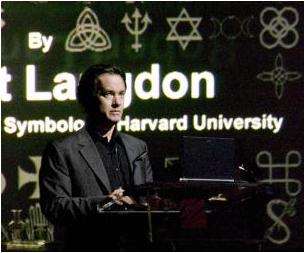
"The end is where we start from." — T. S. Eliot



Comments Off on Further Adventures in Harvard Iconology…
Sunday, November 6, 2022
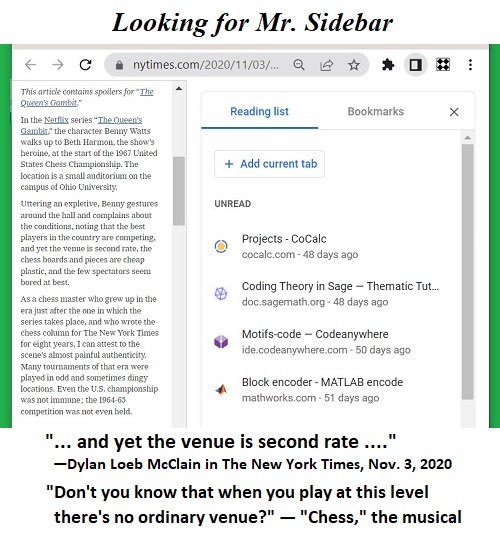
"… the 1964-65 competition was not even held."
— Dylan Loeb McClain in The New York Times , Nov. 3, 2020.
But in other games . . .
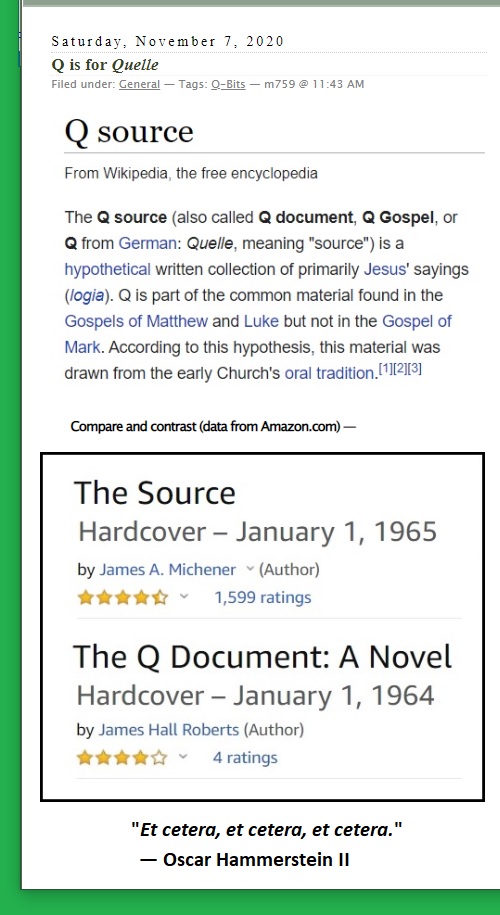
"The metaphor for metamorphosis no keys unlock."
— Steven H. Cullinane, November Seventh, 1986
Comments Off on The ’64-’65 Gambit

And then there is the Paris Review opening . . . .
See "The Hunt for Galois October."
Comments Off on The Paris Review Opening
Comments Off on Trendy Wendy
Comments Off on Random Terms
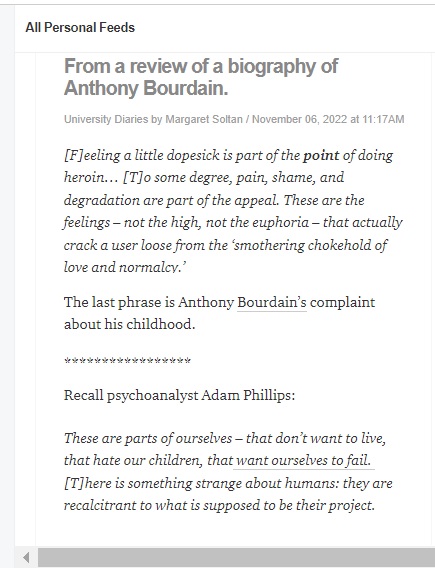
… And then there is The Beaty Project …
♫ "On the banks of Conewango,
just above the dam…"
Comments Off on “Goldengrove Unleaving”
Saturday, November 5, 2022
Bridge


Dam

April 11, 2020, was the dies natalis ,
in the Catholic sense,
of John Horton Conway.
Whatever.

Comments Off on Under the Bridge, Over the Dam … Whatever.

See as well this journal on July 17, 2019 —
Posts now tagged Life-Death-Geometry.
Comments Off on Life, Death, and Geometry

Click the above image search for a larger view.
Comments Off on AEIOU
Friday, November 4, 2022
Heard Thursday evening in the dark fields of the republic —
"Rebel rebel, you've torn your dress
Rebel rebel, your face is a mess
Rebel rebel, how could they know?
Hot tramp, I love you so!"


Addendum — 10:30 AM ET on 5 Nov. 2022 —

Addendum — 5:45 PM ET on 4 Nov. 2022 —
The Triangle Club of Sadness

Comments Off on Dark Fields Lyric
Comments Off on Annals of Theology: The Coordinatization Being
Thursday, November 3, 2022
"If you can't dazzle 'em with brilliance,
baffle 'em with bullshit." — Folk saying
Brilliance —
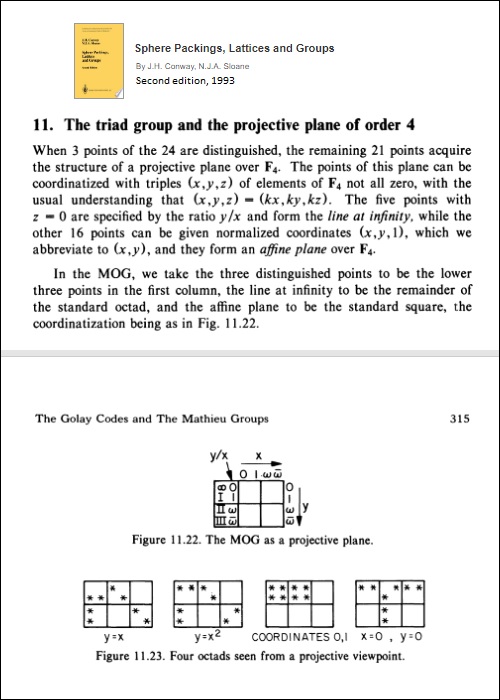
Bullshit —
A New York Times book review on All Saints' Day 2002 —
"Like every villain, Sill has an origin story. This one involves
the murder of his father and the assassination of Martin Luther King Jr.
As vengeance, Sill resolves to destroy America using a weapon
called a 'complex projective plane orbiter.' What does that mean?
Don’t worry about it."

Related reading: The Aloha Grid .
Comments Off on Dazzled or Baffled?
"Rotate, Flip, and Stretch, Baby!"
"One way to evaluate an artist is to observe the quantity and quality
of misinterpretation his work begets. By this measure Everett ranks
very highly. 'Damn it, I don’t understand it, but I love it,' mutters one
of the characters, regarding Sill’s weapon of nothingness. Same.
Kitu has a colleague named Eigen Vector, which refers to …
something having to do with linear transformations?"
— Book review by Molly Young in The New York Times
on All Hallows' Day 2022


See as well Bik in The New Yorker on June 23, 2021.
Comments Off on Linear Transformations for Scientists, or . . .
See the title in this journal.
Comments Off on Appropriation
Comments Off on Colorful Appropriation*
Wednesday, November 2, 2022

"Principal photography has begun in Croatia
on the action thriller Canary Black , starring Kate Beckinsale
and Rupert Friend (Anatomy of a Scandal )."
"The film’s plot follows a top CIA operative, Avery Graves
(Beckinsale)…. Cut off from her team, she turns to her
underworld contacts to survive and help locate the
coveted intelligence that the kidnappers want."
[Croatia , underworld , and coveted intelligence links added.}

Comments Off on The Plot
1979 —

2022 —

Comments Off on Groups and Spaces, 1979-2022
Tuesday, November 1, 2022

See as well this journal on the above date — Broomsday 2014.
Comments Off on Play
"This time we almost made
our poem rhyme, didn't we?"

For the sensuality, see the noon post.
Comments Off on Grimes Rhymes

From other Log24 posts tagged "The Phantom Date" —
“… her mouth is red and large, with Disney overtones. But it is her eyes,
a pale green of surprising intensity, that hold me.”
— Violet Henderson in Vogue , 30 August 2017
Comments Off on Disney Overtones
The above title is that of a Log24 post on St. Cecilia's Day in 2017
that quoted some earlier All Souls' Day remarks from Berlin.
From that post —

Exercise: Explain why the lead article in the November issue of
Notices of the American Mathematical Society misquotes Weyl
and gives the misleading impression that the example above,
the eightfold cube , might be part of the mathematical pursuit
known as geometric group theory .

Background: Earlier instances here of the phrase "geometric group theory."
Comments Off on From “Goethe on All Souls’ Day”
Monday, October 31, 2022
Folklore —

Earlier in that same journal . . .

Mathematics —

Comments Off on Folklore vs. Mathematics
Sunday, October 30, 2022
The New York Times today reported a death on October 18th,
the Feast of St. Luke.

See also Luke in this journal. Some will prefer Cool Hand Luke to
the alleged gospel author.
"Sometimes nothin' can be a real cool hand."
Comments Off on Rethinking October 18th
Saturday, October 29, 2022

"Quarterly" in a different sense —

From "Beyond the Limits," this journal, July 3, 2010.
Comments Off on Quarterly

From Log24 posts tagged Boole vs. Galois —

Kauffman‘s fixation on the work of Spencer-Brown is perhaps in part
due to Kauffman’s familiarity with Boolean algebra and his ignorance of
Galois geometry. See other posts now tagged Boole vs. Galois.

See also “A Four-Color Epic” (April 16, 2020).
Comments Off on Boolean Halloween
Friday, October 28, 2022

See also "hell of a band" in this journal.
Comments Off on “If there’s a rock ’n’ roll heaven…”
Comments Off on In Memoriam
From an Oct. 26 elegy in the form of a book review …

From a search in this journal for "deploy" —

Related art —


As for "Miracles and Visionaries," I prefer the literature associated
with the 1974 Miracle Octad Generator of R. T. Curtis.
Comments Off on The Lexeme “Deploy”
Thursday, October 27, 2022
A reference to neoliberalism in today's news suggests a look at
a British journalist's remarks from April 2016 . . .
"Like communism, neoliberalism is
the God that failed. But the zombie doctrine
staggers on . . . ."
Comments Off on The Zombie Doctrine
Wednesday, October 26, 2022
Big Rock
"I'm going to hit this problem
with a big rock."
– Mathematical saying, quoted here
on St. Peter's Day 2008

"I see a red door and I want it painted black" — The Rolling Stones
Comments Off on The Big Rock
"… Évariste was born on October 25, 1811."
— Eric Temple Bell, Men of Mathematics

Related material —
https://math.stackexchange.com/questions/1793035/
galois-field-of-order-2-constituting-a-boolean-algebra .
But seriously . . .
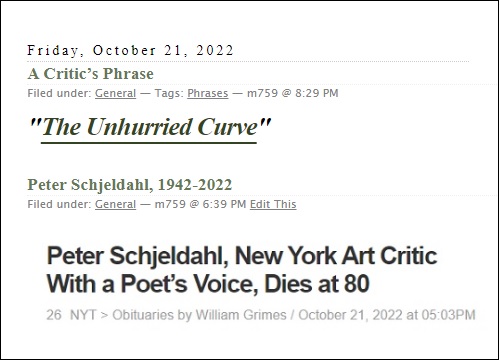
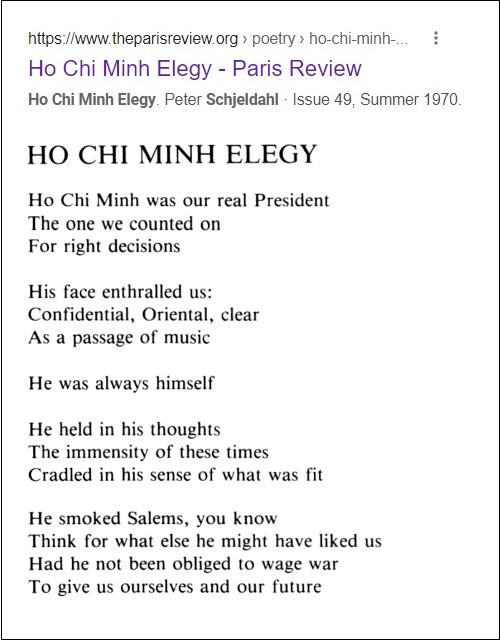
Comments Off on The Hunt for Galois October
Comments Off on Another Midnight, Another Couch
Tuesday, October 25, 2022

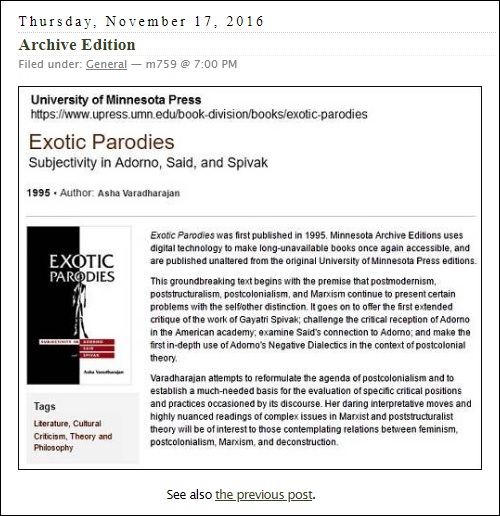


See also "Marxism" in Varadharajan's CV and . . .
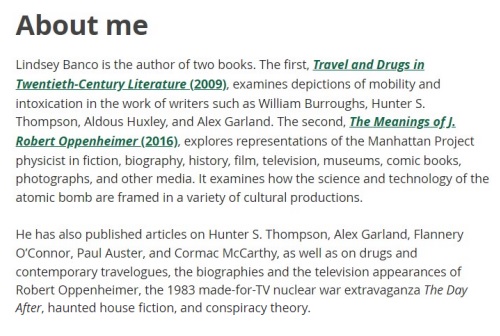
Comments Off on Orison Metadata
Monday, October 24, 2022


This post is a sequel to my earlier memoir, "Turning Nine."
Related material … "Double Twist" in …

Comments Off on Turning Eight: Double Twist
Sunday, October 23, 2022

For Pekonen in this journal, see
From the Finland Station (25 April 2022).
See as well an obituary from Finland.
Comments Off on Mathematical Intelligencer News

Related material —
CLIPPED FROM The Californian , Salinas, California,
28 July 2001, Saturday • Page 25 —

The above 2001 article on Cruz Saddlery in Salinas is about the family
of "Sacheen Littlefeather," whose real name was reportedly Maria Louise Cruz.
For more about Maria/Sacheen, see yesterday's San Francisco Chronicle :
"Sacheen Littlefeather was a Native American icon.
Her sisters say she was an ethnic fraud."
From that article —

Comments Off on Saddle Design: The Little Big Horn
Saturday, October 22, 2022
Comments Off on Design Research . . .

Also on October 3rd . . . The Concrete of Destiny .
Comments Off on The Concrete of Destiny

See also . . .

Illustration . . .


Metadata —


Comments Off on An Artist’s Phrase: “Form from Morf” — Josefine Lyche
Friday, October 21, 2022
Comments Off on A Critic’s Phrase
Comments Off on Peter Schjeldahl, 1942-2022
Comments Off on Dimensional Positioning*


Some will prefer the saddle shape of
Capilla Abierta.
Comments Off on Meta Wordmark

Gone —
Arts & Letters Daily today noted a recent death:

There —

See "The 24 Box," June 12, 2021.
Comments Off on The Fort/Da Game
Continuing the "Design Awards" series of posts . . .

See as well, from a search in this journal for Caprica . . .
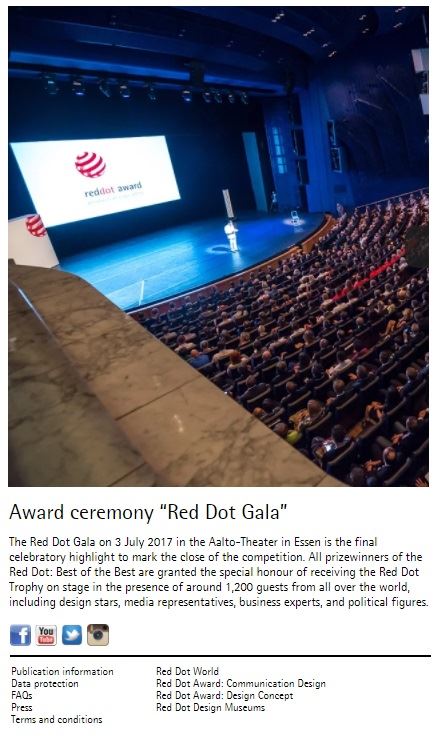

Comments Off on Design Award
Thursday, October 20, 2022

This post was suggested by a Google search today.
Comments Off on In Hoc Signo
Comments Off on Déjà Vu All Over Again
Wednesday, October 19, 2022

Meanwhile, in this journal on the above date of death —
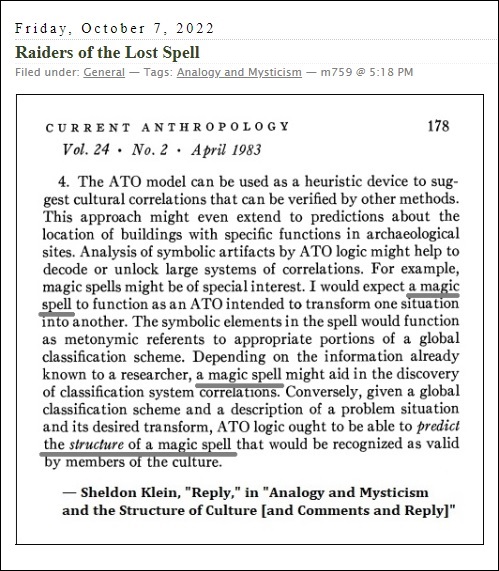
Comments Off on Key Seeks Keyhole
Comments Off on The Red Dot
Tuesday, October 18, 2022

See as well remarks here from 23 Dec. 2014
on the Greek word "stoicheia."
Comments Off on Square Ice
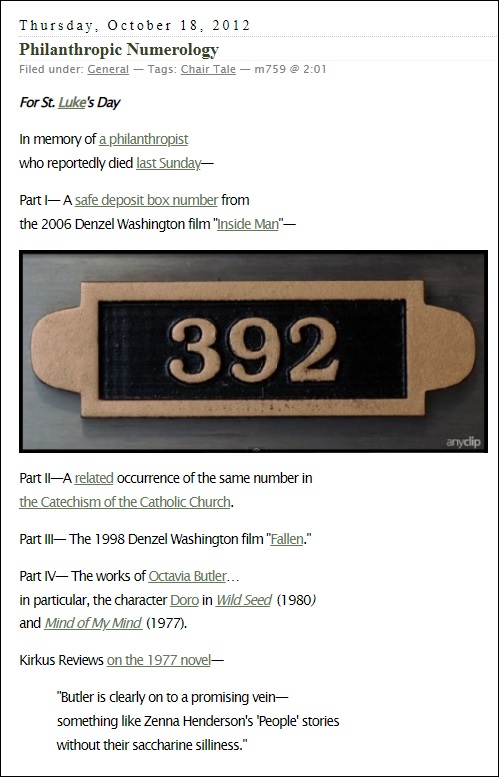
… "and moss grows fat on a rolling stone."
Comments Off on “I’m In with the In Crowd” …
Monday, October 17, 2022
The previous post suggests A Scholium for St. Bridget . . .

Comments Off on A Sinuous Scholium
Comments Off on Demianova in Barcelona
"Geometric Group Theory" by Matt Clay, U. of Arkansas
"This article is intended to give an idea about how
the topology and geometry of a space influences
the algebraic structure of groups that act on it and
how this can be used to investigate groups."
— Notices homepage summary
A more precise description of the subject . . .
"The key idea in geometric group theory is to study
infinite groups by endowing them with a metric and
treating them as geometric spaces."
— AMS description of the 2018 treatise
Geometric Group Theory , by Drutu and Kapovich
See also "Geometric Group Theory" in this journal.
The sort of thing that most interests me, finite groups
acting on finite structures, is not included in the above
description of Clay's article. That description only
applies to topological spaces. Topology is of little use
for finite structures … unless they are embedded* in
larger spaces that are continuous, not discrete.
* As, for instance, the fifty-six 3-subsets of an 8-set are
embedded in the continuous space of The Eightfold Way .
Comments Off on From the November 2022 Notices of the A.M.S.
Sunday, October 16, 2022

The author of the above Math Academy story is one Jay Mathews:

As a model for accelerated learning, I prefer Kate Demianova.
Comments Off on Models for Accelerated Learning
The inspiration for the previous post —

See as well Top and Bottom in this journal.
Comments Off on The Demianova Epiphany

See also the Log24 posts of July 26, 2011, now tagged Images for Siri.

Comments Off on Images for Siri
Comments Off on For Broomsday: Turning Eight
Saturday, October 15, 2022
Comments Off on Dark Materials
Comments Off on Concept Art
Continues.


"And the Führer digs for trinkets in the desert."
Comments Off on A Box of Nothing . . .
Comments Off on Social Calendar Girls
Comments Off on Serpentine Meditation
Friday, October 14, 2022
Comments Off on Symmetry Wars
Comments Off on Recreational Crystallography

See as well "Sunset Boulevard" in this journal.
Comments Off on The Harlan Kane Story
Comments Off on The Old Hollywood Runaround
Comments Off on The Criterion Instagram
Thursday, October 13, 2022
A link in memory of a Princeton-educated mathematics professor who
reportedly died on June 22, 2022 . . . Some non-Princeton triangles.
Comments Off on Triangle Entertainment
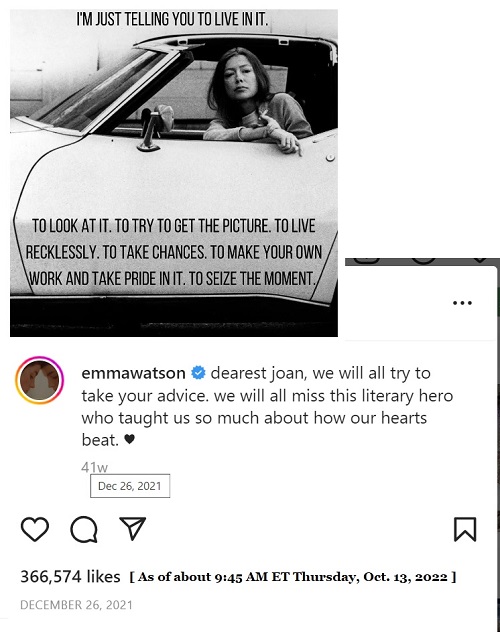
A routine check for the accuracy of Watson's quotation yields the source
of Didion's remarks — a 1975 UC Riverside commencement address.
Comments Off on The Watson Instagram
A search for background on the previous post's Eliot Weinberger yields,
from Berlin . . .
"In 2000 he was the first US writer to be honoured with
the Order of the Aztec Eagle from the Mexican government."
— "2000 zeichnete ihn die mexikanische Regierung als ersten
US-amerikanischen Autor mit dem Order of the Aztec Eagle aus."
The Aztec Eagle with a serpent in its beak, landing on a prickly pear,
is pictured on the flag of Mexico.
See also Weinberger's work at Prickly Paradigm Press.

Related material: Other Log24 posts tagged Prickly.
Comments Off on Prickly Paradigm Press
Wednesday, October 12, 2022
Continues.
"Think about anything often enough, from enough angles,
and it’s bound to splinter and refract. Our minds are like
kaleidoscopes, packed with mirrors we twist to see the
world anew. Sometimes we’re twisting consciously,
sometimes unconsciously. But no matter what, we end up
seeing patterns that are more a product of the tool in hand
than of the world on its other end."
— Henry M. Cowles in The Los Angeles Review of Books ,
October 11, 2022
Cowles on the book under review —
"… Patrick House’s Nineteen Ways of Looking at Consciousness ,
a new book on neuroscience and its limits. Lest readers jump to
the wrong conclusion: The referent in House’s title, though also
poetic, is not Stevens but rather Nineteen Ways of Looking at
Wang Wei , an anthology of attempts to translate a four-line poem
from the Tang Dynasty."
"The referent" anthology is, according to Google Books,
"a close reading of different translations of a single poem."
The close reader is Eliot Weinberger, who appeared here in 2011 …

The "my own" link above is to "Pilate Goes to Kindergarten."
Comments Off on Kaleidoscopic Structuralism…
Time and Chance continues …



Comments Off on Spatial K
Monday, October 10, 2022

The two "D" favicons in this Sunday image are for "Deadline."

Comments Off on The 10/10 Business

See also a Log24 search for "The Path."
Related material from a similar search
for "Nanavira Thera" —
"I am glad you have discovered that the situation is comical:
ever since studying Kummer I have been, with some difficulty,
refraining from making that remark."
— Nanavira Thera, Seeking the Path [Early Letters, 17 July 1958].
Comments Off on Seeking the Path
The following note from Oct. 10, 1985, was not included
in my finitegeometry.org/sc pages.

See some related group actions on the cuboctahedron at right above.
Comments Off on Hidden Structure
Sunday, October 9, 2022

"For Marker, memory isn’t passive; it’s an act of resistance—
the edge that cuts a path into the future—and the effective work
of memory is the very definition of art."
— July 30, 2012 in The New Yorker… Richard Brody on the late
film editor Chris Marker.


Comments Off on Cutting Edge
Click to enlarge:

See also "Wild Palms" in this journal.
Comments Off on Sunday Sermon
Comments Off on To the Lighthouse
Saturday, October 8, 2022
("Raiders of the Lost Spell" continues.)

The above flashback to a 2002 post was suggested by a search in
this journal for "Firebird" that yielded, as the only result . . .
http://www.amazon.com/
Witch-Seldom-Firebird-Nancy-Springer/dp/0142302201/.
That URL connects to The Hex Witch of Seldom at Amazon.com.
That book was reportedly published by Firebird on September 16, 2002,
the date of the above Log24 post.
Comments Off on For Fans of Religious Lunacy … The Firebird Date

Log24 art (colored Unicode symbols) from the above date of death:

"Click the red symbol, and …"
— Adapted from "The Matrix."
Comments Off on Chandler Davis, 1926-2022
The phrase "cultural correlations" from the previous post suggests . . .

From this journal on Bloomsday 2008 —
The holy image

denoting belief and revelation
may be interpreted as
a black hole or as a
symbol by James Joyce :
|
When?
Going to dark bed there was a square round Sinbad the Sailor roc’s auk’s egg in the night of the bed of all the auks of the rocs of Darkinbad the Brightdayler.
Where?

— Ulysses , conclusion of Chapter 17.
|
Comments Off on Cultural Correlation
Friday, October 7, 2022
Comments Off on Raiders of the Lost Spell
See the previous post as well as posts now tagged Soul and Spirit.
|
Soul

|
Spirit

|
The mirror has two faces (at least).
Comments Off on From Mysticism to Mathematics… And Back Again
Thursday, October 6, 2022
[Klein, 1983] S. Klein.
"Analogy and Mysticism and the Structure of Culture
(and Comments & Reply)"
Current Anthropology , 24 (2):151–180, 1983.
The citation above is from a 2017 paper —
"Analogy-preserving Functions:
A Way to Extend Boolean Samples,"
by M. Couceiro, N. Hug, H. Prade, G, Richard.
26th International Joint Conference on Artificial Intelligence
(IJCAI 2017), Aug. 2017, Melbourne, Australia. pp.1-7, ff.
That 2017 paper discusses Boolean functions .
Some more-recent remarks on these functions
as pure mathematics —
"On the Number of Affine Equivalence Classes
of Boolean Functions," by Xiang-dong Hou,
arXiv:2007.12308v2 [math.CO]. Rev. Aug. 18, 2021.
See also other posts now tagged Analogy and Mysticism.
Comments Off on From Mysticism to Mathematics
Wednesday, October 5, 2022
"Battles argues that 'the experience of the physicality
of the book is strongest in large libraries,' and stand
among the glass cube at the center of the British Library,
the stacks upon stacks in Harvard’s Widener Library, or
the domed portico of the Library of Congress and tell me
any differently."
— Ed Simon, Binding the Ghost: Theology, Mystery, and
the Transcendence of Literature. Hardcover – April 19, 2022.

… And back to cube:

Related meditation: Beer Summit.
Comments Off on Physicality
Tuesday, October 4, 2022
Epigraph:

Images from April 1, 2004:

Comments Off on Images from April 1, 2004
Monday, October 3, 2022
In memory of a mathematics professor who
reportedly died on May 21, 2022 —



"… mouses over to a file …." Or a folder.


Comments Off on Old Code


The above art by Steven H. Cullinane is not unrelated to
art by Josefine Lyche. Her work includes sculpted replicas
of the above abstract Platonic solids, as well as replicas of
my own work related to properties of the 4×6 rectangle above.
Symmetries of both the solids and the rectangle may be
viewed as permutations of parts — In the Platonic solids,
the parts are permuted by continuous rotations of space itself.
In the rectangle, the parts are permuted by non-continuous
transformations, as in the I Ching . . . i.e., by concrete illustrations
of change.
Comments Off on The Abstract and the Concrete
Sunday, October 2, 2022
Comments Off on Epistemology in Norway
Saturday, October 1, 2022

Also on the above Berlin date —
Wednesday, November 6, 2013
Filed under: General — Tags: Bullshit Studies, Glasperlenspiel
— m759 @ 3:12 PM
The essay excerpted in last night's post on structuralism
is of value as part of a sustained attack by the late
Robert de Marrais on the damned nonsense of the late
French literary theorist Jacques Derrida—
Catastrophes, Kaleidoscopes, String Quartets:
Deploying the Glass Bead Game
Part I: Ministrations Concerning Silliness, or:
Is “Interdisciplinary Thought” an Oxymoron?
Part II: Canonical Collage-oscopes, or:
Claude in Jacques’ Trap? Not What It Sounds Like!
Part III: Grooving on the Sly with Klein Groups
Part IV: Claude’s Kaleidoscope . . . and Carl’s
Part V: Spelling the Tree, from Aleph to Tav
(While Not Forgetting to Shin)
The response of de Marrais to Derrida's oeuvre nicely
exemplifies the maxim of Norman Mailer that
"At times, bullshit can only be countered
with superior bullshit."
|
Comments Off on Mexican Beach Bum Glam
"… a hyper-intellectual fable that riddles you into a house
of mirrors from which you wonder if you’ll ever emerge.
(Imagine packaging the universe’s most existential questions
as Abbott and Costello’s 'Who’s on First?' routine.)"
— Book review by Michael Callahan in The New York Times
on September 19, 2022.
Comments Off on Imagine.
Friday, September 30, 2022


Related Log24 posts …
See Vox Lux and Mathieu Omega.
Related book cover …


Comments Off on Classics Illustrated: The Bitmap File by Harlan Kane
Thursday, September 29, 2022
The exercise posted here on Sept. 11, 2022, suggests a
more precisely stated problem . . .
The 24 coordinate-positions of the 4096 length-24 words of the
extended binary Golay code G24 can be arranged in a 4×6 array
in, of course, 24! ways.
Some of these ways are more geometrically natural than others.
See, for instance, the Miracle Octad Generator of R. T. Curtis.
What is the size of the largest subcode C of G24 that can be
arranged in a 4×6 array in such a way that the set of words of C
is invariant under the symmetry group of the rectangle itself, i.e. the
four-group of the identity along with horizontal and vertical reflections
and 180-degree rotation.
Recent Log24 posts tagged Bitspace describe the structure of
an 8-dimensional (256-word) code in a 4×6 array that has such
symmetry, but it is not yet clear whether that "cube-motif" code
is a Golay subcode. (Its octads are Golay, but possibly not all its
dodecads; the octads do not quite generate the entire code.)
Magma may have an answer, but I have had little experience in
its use.
* Footnote of 30 September 2022. The 4×6 problem is a
special case of a more general symmetric embedding problem.
Given a linear code C and a mapping of C to parts of a geometric
object A with symmetry group G, what is the largest subcode of C
invariant under G? What is the largest such subcode under all
such mappings from C to A?
Comments Off on The 4×6 Problem*
Wednesday, September 28, 2022

Update of 5:20 AM ET on Sept. 29. 2022 —
The octads of the [24, 8, 8] cube-motif code
can be transformed by the permutation below
into octads recognizable, thanks to the Miracle
Octad Generator (MOG) of R. T. Curtis, as
belonging to the Golay code.

Comments Off on Bitspace Note
The title is by Henry James.*
For examples, see the Sept. 19 webpage below . . .
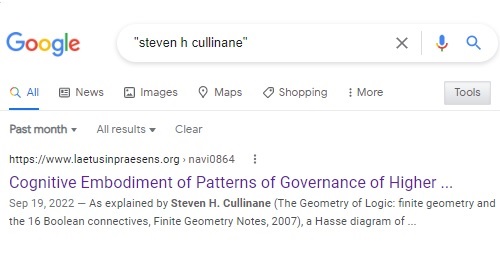
… and, in this journal, posts from that same date now tagged Cube Codes.
*

Comments Off on The Madness of Art
Tuesday, September 27, 2022
For connoisseurs of bullshit, from The New Yorker yesterday —
Comments Off on The Rockmore Files
Monday, September 26, 2022

"Remember, remember
the eighth of September."
Update of 6 AM Sept. 27:
A search for related material
on The Eighth of September
yields a Pablo Neruda poem
and a Barbara Stevens Sullivan
novel, both with that title.
Also by Sullivan . . .

See as well a Log24 post from 2016, "The Mystery of O,"
on June 29, the Feast of Saints Peter and Paul.
Comments Off on And …
Comments Off on A Chevron for Pynchon: The Maltese V
Sunday, September 25, 2022
"The actor Nick Offerman, himself an accomplished woodworker
and a member of Ms. Hiller’s legion of admirers, called her an
'Obi-Wan Kenobi level master.'"
— The New York Times this evening, obituary by Clay Risen
for Nancy Hiller.
Related woodwork note —

"There and back again."
Comments Off on Woodwork
From a search in this journal for Postman . . .
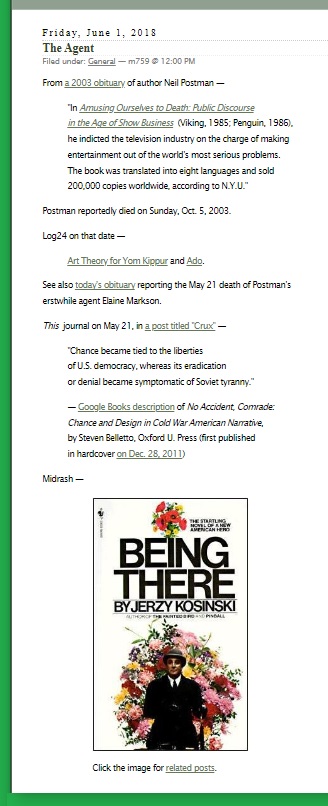
Comments Off on Marvelette Comics
Saturday, September 24, 2022
From posts now tagged Blue Note —


Comments Off on Blue Note for Doctor Sax
Comments Off on Nine and Sixteen: In Search of Common Ground
Friday, September 23, 2022
Data:

Meta:
Brainstorm (1983 film)
Update at 5:18 AM Saturday, Sept. 24 —
See also "Brainstorm" in this journal.
Comments Off on Data + Meta = WTF
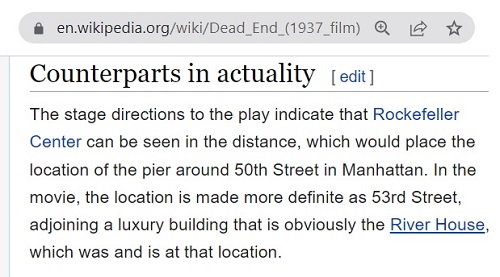
Click the above to search this journal for "Dead End."
Comments Off on Data versus Meta … Continues.
In memory of historical novelist Hilary Mantel, who reportedly
died yesterday, two images dealing with this year's Sept. 11 —


The image from Rome was suggested by yesterday's Dürer post and
by the year 1514 in the life of Thomas Cromwell, Mantel's main topic.
Comments Off on Annals of Historical Fiction

Jung’s four-diamond figure from
Aion — a symbol of the self –

For those who prefer the Ed Wood approach —
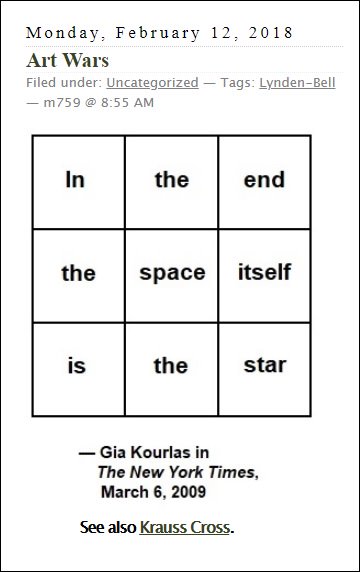
Comments Off on Raiders of the Lost Archive … The Jung Genizah
Thursday, September 22, 2022
The previous post's image illustrating the
ancient Lo Shu square as an affine transformation
suggests a similar view of Dürer's square.
That view illustrates the structural principle
underlying the diamond theorem —

Comments Off on Affine Dürer
« Newer Posts —
Older Posts »

































































































































